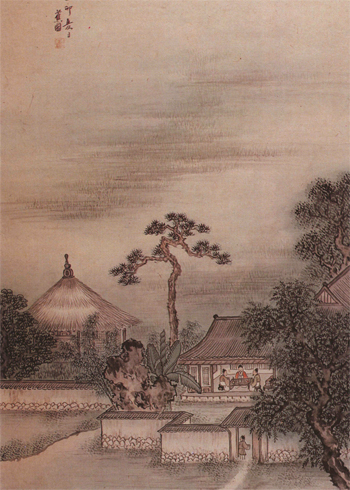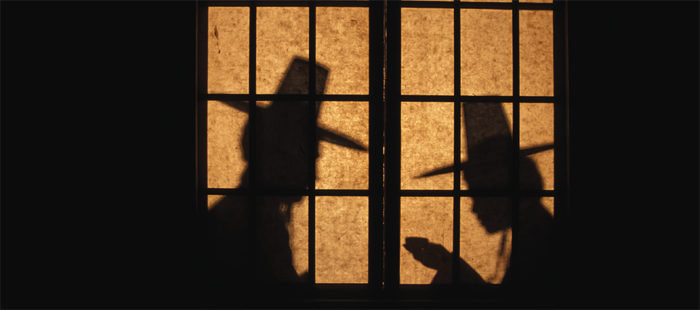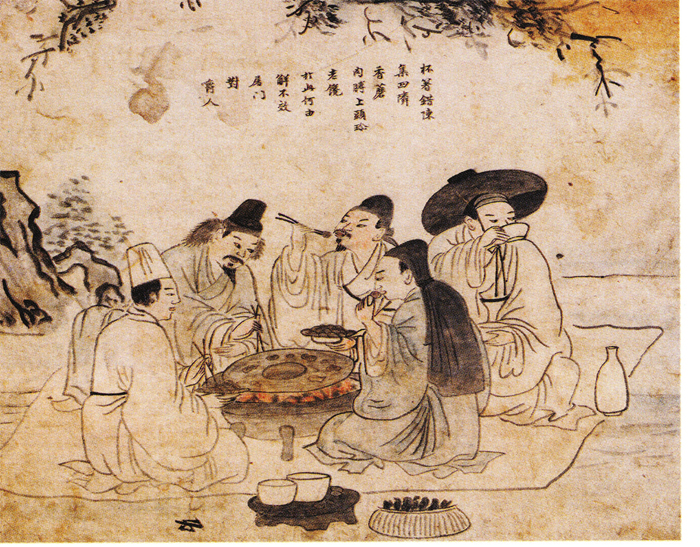View this article in another language
- 한국어
- English
- 日本語
- 中文
- العربية
- Español
- Français
- Deutsch
- Pусский
- Tiếng Việt
- Indonesian
This is the last part in our series, “Alcohol in Korean life.” Click here to see previous posts.
Sul and Manners
Koreans have long regarded sul as something to be consumed in accordance with proper manners and etiquette. Sul is offered on ritual tables for ancestors, served to visiting guests and offered to family elders alongside regular meals. Drinking with the right mindset and observing good manners is, therefore, thought to be very significant.
 Drinking Manners
Drinking Manners
Influenced by Confucianism, Korean society has long valued courtesy and etiquette in every aspect of life, and drinking is no exception. Basically, drinking was not possible without the permission of the head of the family and in front of adults, and females could join a drinking gathering but could not serve liquor to men or fill the cups of men.
Drinking etiquette originated from Sohak, or “Lesser Learning,” which suggested rules and regulations in everyday life during the Joseon Dynasty (1392-1910). According to the “Lesser Learning,” when one tops up the other’s cup, one should hold a liquor bottle with the right hand and roll up the sleeve on the right arm with the left hand. This is so the clothes do not touch the food or drink. Offered a cup of liquor from an adult, a younger person should politely receive the cup, expressing words of gratitude. He could only empty the cup after the adult finished his drink, and he must drink with his head turned to the side and with the cup covered by his hand. When receiving a cup of liquor, one should empty the cup and return it to the giver. Even nondrinkers should sip the cup and put it back on the table when the liquor is offered.
Drinking Customs
Since drinking was enjoyed by all social classes from the king to house servants, drinking feasts were held as a means of giving. At drinking festivals, people of the nobility sat on a chair with an individual tray of dishes and liquor, and commoners sat on the floor with two people sharing one tray.
Receiving guests was part of everyday life even for those without official governmental titles. Therefore, each household regularly brewed liquor to give to guests. An expression associated with this practice is jujugaekban, meaning “the owner asks the guest to have some liquor and the guest asks the owner to have some rice.” It is said that this expression came out of an anecdote when two arch rivals found each other sharing a table of dishes and liquor. One offered his rival a cup of liquor, saying, “Please have a cup of wine,” and the other replied, “Please have a bowl of rice since you must be hungry after a long wait.” Koreans are known to give great importance to serving sul to guests with the utmost courtesy, even between rivals.
Exhausting farm labor was soothed by drinking. On a short break during fieldwork, farmhands would sit in a circle to enjoy the refreshing drink and sentiment in sharing nongju, farmer’s liquor. They would call out to passing strangers, neighbors, family elders or friends to join them in the drinking break.

Indeed, sul is very much entrenched in the culture, given by elders to the young, served by homeowners to their guests and consumed by hard-working field hands to ease fatigue from hard labor. Exchanging liquor cups speaks of the exchange of minds. Koreans offer a cup of drink to each other and fill the cup to the brim with a convivial and generous mind.
Drinking Culture
A peculiar aspect of Korean drinking manners is the way liquor cups are handled. A cup should be received with both hands and returned back after emptying it.
When the difference in age between drinking companions is less than five years, offering and receiving liquor cups with one hand is permissible. For those who address each other formally, liquor cups should be handled with both hands. When in particular an elder offers one a cup of liquor, the younger person should take it with two hands and say words of gratitude. Even when of the same age or younger, women are offered liquor cups with both hands.

Drinking culture varies between different countries. In Japan, drinkers top up their own glasses. In China and Russia, people empty their cups all at once, but suggesting a toast is done at different times: people exchange toasts after drinking in China and before drinking in Russia. The practice of circulating and exchanging liquor cups is unique to Korea: a cup received is returned back to the cup owner, the groom’s cup is given to the bride at a wedding; and, a cup on the ritual table is circulated amongst the celebrants.
Exchanging liquor cups is intended to tear down unnecessary formality between individuals. Receiving a cup with two hands is a way to express courtesy to the other. The drinking manners of the Korean people embody their deep-rooted compassion and affection toward each other.
*This series of article has been made possible through the cooperation of the National Research Institute of Cultural Heritage. (Source: Intangible Cultural Heritage of Korea)
Sul and Manners
Koreans have long regarded sul as something to be consumed in accordance with proper manners and etiquette. Sul is offered on ritual tables for ancestors, served to visiting guests and offered to family elders alongside regular meals. Drinking with the right mindset and observing good manners is, therefore, thought to be very significant.

“Hailjuyeondo”, “A Drinking Party on a Summer’s Day”, by Yi Su-min
Influenced by Confucianism, Korean society has long valued courtesy and etiquette in every aspect of life, and drinking is no exception. Basically, drinking was not possible without the permission of the head of the family and in front of adults, and females could join a drinking gathering but could not serve liquor to men or fill the cups of men.
Drinking etiquette originated from Sohak, or “Lesser Learning,” which suggested rules and regulations in everyday life during the Joseon Dynasty (1392-1910). According to the “Lesser Learning,” when one tops up the other’s cup, one should hold a liquor bottle with the right hand and roll up the sleeve on the right arm with the left hand. This is so the clothes do not touch the food or drink. Offered a cup of liquor from an adult, a younger person should politely receive the cup, expressing words of gratitude. He could only empty the cup after the adult finished his drink, and he must drink with his head turned to the side and with the cup covered by his hand. When receiving a cup of liquor, one should empty the cup and return it to the giver. Even nondrinkers should sip the cup and put it back on the table when the liquor is offered.
Drinking Customs
Since drinking was enjoyed by all social classes from the king to house servants, drinking feasts were held as a means of giving. At drinking festivals, people of the nobility sat on a chair with an individual tray of dishes and liquor, and commoners sat on the floor with two people sharing one tray.
Receiving guests was part of everyday life even for those without official governmental titles. Therefore, each household regularly brewed liquor to give to guests. An expression associated with this practice is jujugaekban, meaning “the owner asks the guest to have some liquor and the guest asks the owner to have some rice.” It is said that this expression came out of an anecdote when two arch rivals found each other sharing a table of dishes and liquor. One offered his rival a cup of liquor, saying, “Please have a cup of wine,” and the other replied, “Please have a bowl of rice since you must be hungry after a long wait.” Koreans are known to give great importance to serving sul to guests with the utmost courtesy, even between rivals.
Exhausting farm labor was soothed by drinking. On a short break during fieldwork, farmhands would sit in a circle to enjoy the refreshing drink and sentiment in sharing nongju, farmer’s liquor. They would call out to passing strangers, neighbors, family elders or friends to join them in the drinking break.

Indeed, sul is very much entrenched in the culture, given by elders to the young, served by homeowners to their guests and consumed by hard-working field hands to ease fatigue from hard labor. Exchanging liquor cups speaks of the exchange of minds. Koreans offer a cup of drink to each other and fill the cup to the brim with a convivial and generous mind.
Drinking Culture
A peculiar aspect of Korean drinking manners is the way liquor cups are handled. A cup should be received with both hands and returned back after emptying it.
When the difference in age between drinking companions is less than five years, offering and receiving liquor cups with one hand is permissible. For those who address each other formally, liquor cups should be handled with both hands. When in particular an elder offers one a cup of liquor, the younger person should take it with two hands and say words of gratitude. Even when of the same age or younger, women are offered liquor cups with both hands.

“Yayeon”, “Night Banquet” from “The Picture Book of Genre Paintings” by Seong Hyeop.
Drinking culture varies between different countries. In Japan, drinkers top up their own glasses. In China and Russia, people empty their cups all at once, but suggesting a toast is done at different times: people exchange toasts after drinking in China and before drinking in Russia. The practice of circulating and exchanging liquor cups is unique to Korea: a cup received is returned back to the cup owner, the groom’s cup is given to the bride at a wedding; and, a cup on the ritual table is circulated amongst the celebrants.
Exchanging liquor cups is intended to tear down unnecessary formality between individuals. Receiving a cup with two hands is a way to express courtesy to the other. The drinking manners of the Korean people embody their deep-rooted compassion and affection toward each other.
*This series of article has been made possible through the cooperation of the National Research Institute of Cultural Heritage. (Source: Intangible Cultural Heritage of Korea)

![Alcohol in Korean Life [7]](/upload/content/image/1390264867289.jpg)
![Alcohol in Korean life [6]](/upload/content/image/1389771019931.jpg)
![Alcohol in Korean life [5]](/upload/content/image/1389148059127.jpg)
![Alcohol in Korean life [4]](/upload/content/image/1388639967163.jpg)